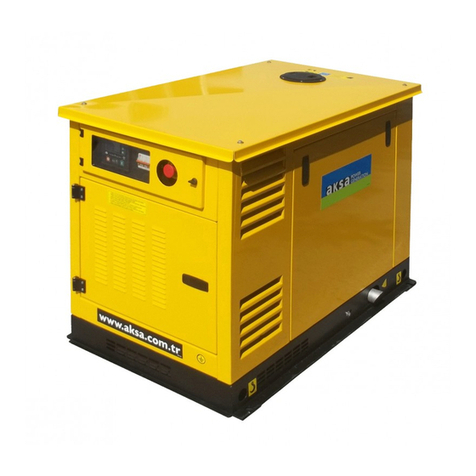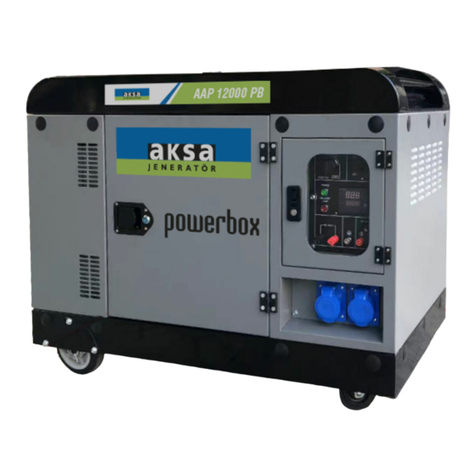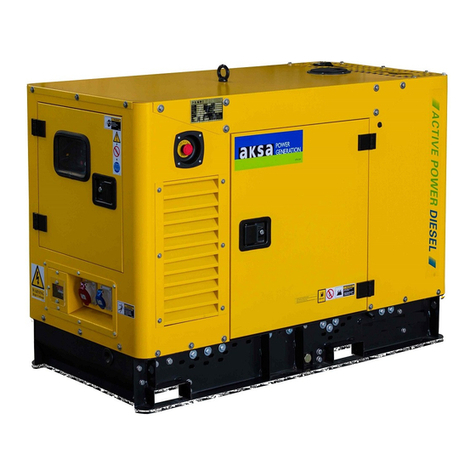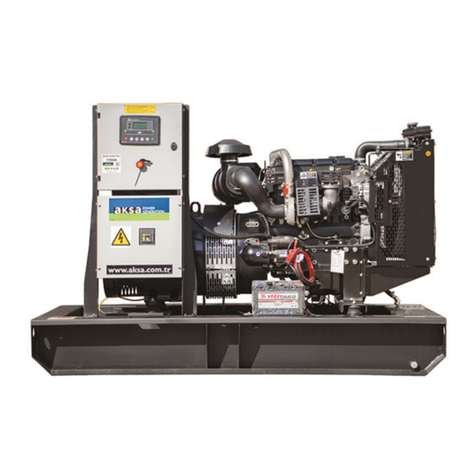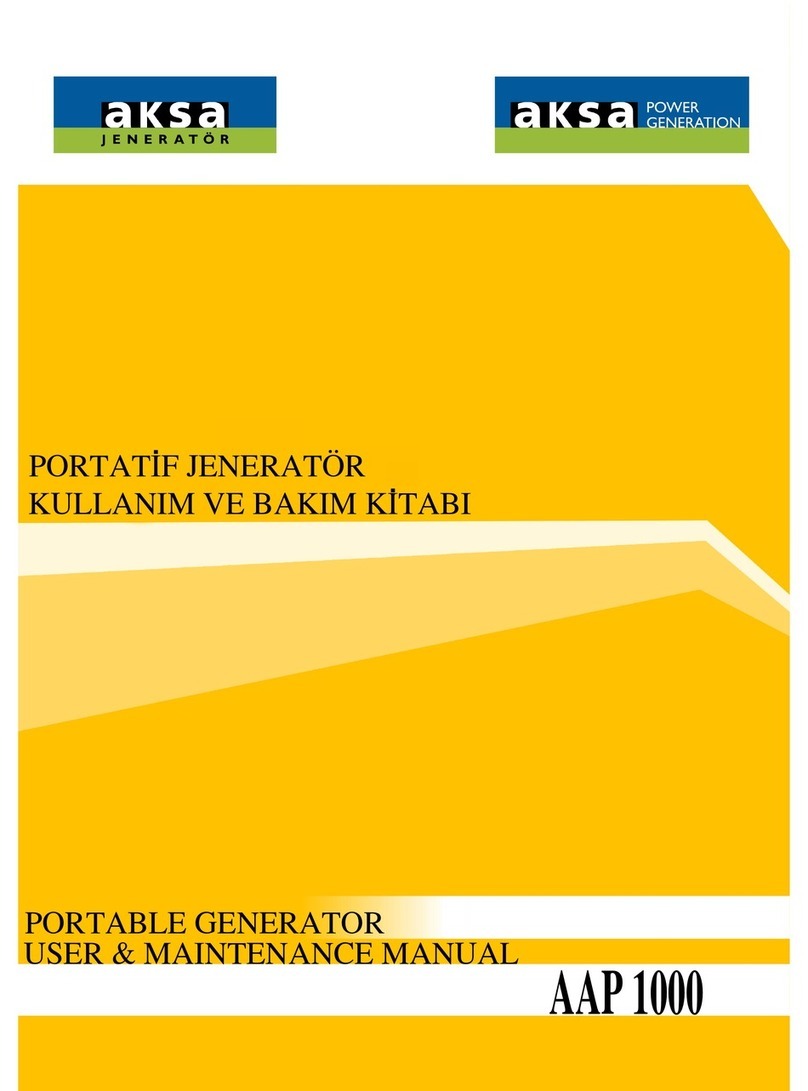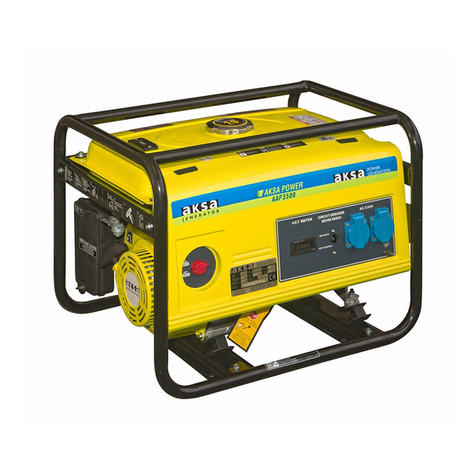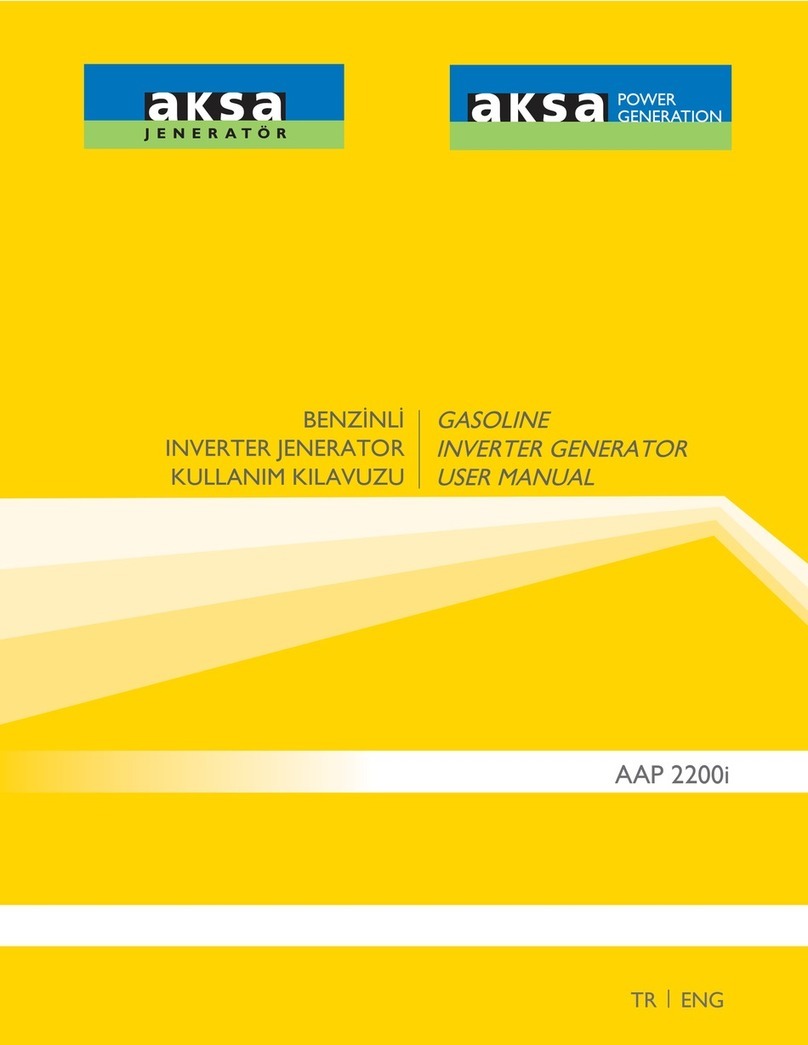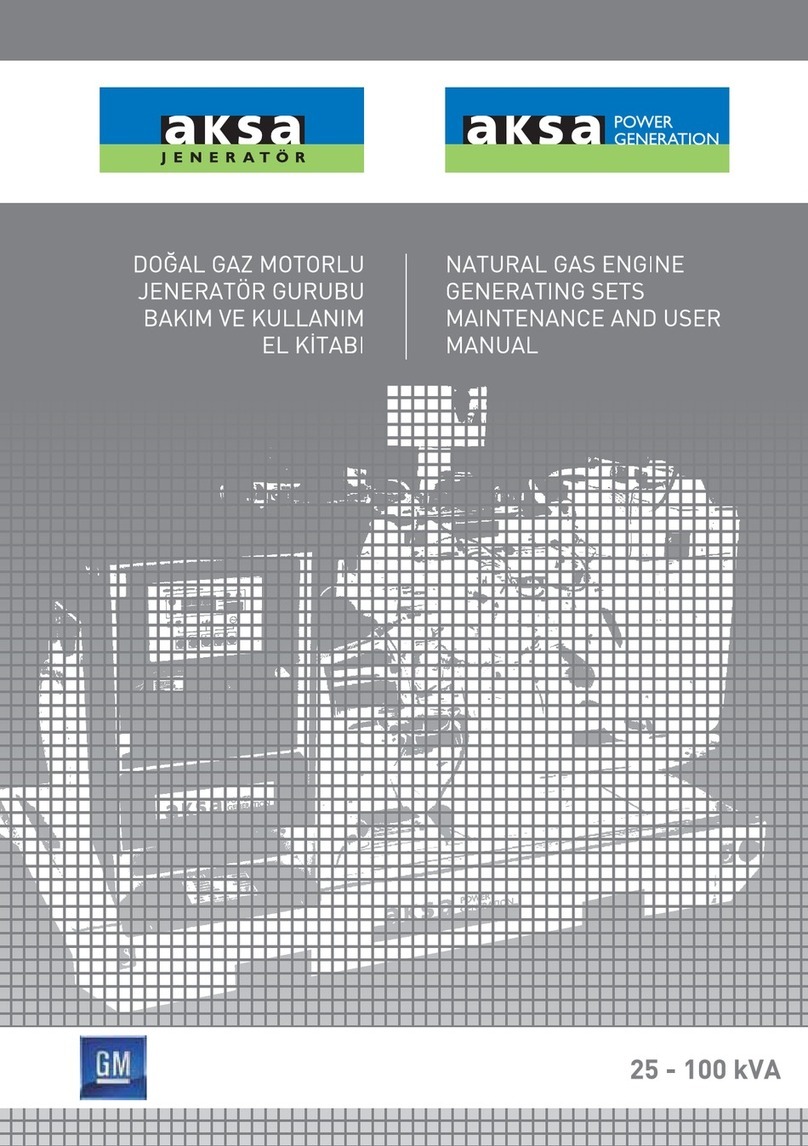
2
2. GENERAL SAFETY PRECAUTIONS
2.I. GENERAL
1- The owner is responsible ‘for maintaining the unit
in a safe operating condition. Unit parts and accesso-
ries must be replaced if missing or unsuitable for safe
operation.
2- Operate the unit only for the intended purpose and
within its rated limits (pressure, temperature, speeds,
etc).
3- Gen-set and equipment shall be kept clean, i.e. as
free as possible from oil, dust or other deposits.
4- To prevent an increase in working temperature,
inspect and clean heat transfer surfaces (cooler fins,
intercoolers, water jackets, etc.) regularly.
5- Take precautions against fire. Handle gas fuel, oil
and anti-freeze with care because they are inflamma-
ble substances. Do not smoke or approach with naked
flame when handling such substances. Keep a fire-ex-
tinguisher in the vicinity.
WARNING
! Read and understand all safety precautions and warn-
ings before operating or performing maintenance on
the generating set.
! Failure to follow the instructions, procedures, and
safety precautions in this manual may increase the pos-
sibility of accedents and injuries.
! Do not attempt to operate the generating set with a
known unsafe condition.
! If the generating set is unsafe, put danger notices and
disconnect the battery negative (-) lead so that it can-
not be started until the condition is corrected.
! Disconnect the battery negative (-) lead prior to at-
tempting any repairs for cleaning inside the endosure.
! Install and operate this generating set only in full com-
pliance with relevant National, Local or Federal Codes;
Standards or other requirements.
2.2. HANDLING
The following safety precautions should be noted:
WARNING
! Make electrical connections in compliance with rele-
vant Electrical Codes; Standards or other requirements.
This includes requirements for grounding and ground/
earth faults.
! Engine exhaust emissions are hazardous to personnel.
The engine exhaust for all indoor generating sets must
be piped outdoors via leak-free piping in compliance
with relevant Codes, Standards and other require-
ments. Ensure that hot exhaust silencers and piping are
clear of combustible material and are guarded for per-
sonnel protection per safety requirements. Ensure that
furmes from the exhaust outlet will not be a hazard
! Never lift the generating set by attach-
ing to the engine or alternator lifting lugs,
instead use the lifting points on the base
ame or canopy.
! Ensure that the lifting rigging and sup-
porting structure is in good condition
and has a capacity suitable for the load.
! Keep all personnel away from the generating set
when it is suspended.
2.3. Fire and Explosion
Warning
• Natural Gas is extremely ammable and explosive.
• Fire or explosion can cause severe burns or death.
• Install the gas fuel supply system according to appli-
cable fuel-gas codes.
• Before placing the generator into ser-
vice, the fuel system lines must be prop-
erly purged and leak tested.
• After the generator is installed, you
should inspect the gas fuel system periodically.
• NO leakage is permitted.
• DO NOT operate engine if smell of fuel is present or
other explosive conditions exist.
• DO NOT smoke around the generator.Wipe up any
oil spills immediately. Ensure that no combustible ma-
terials are left in the generator compartment Keep the
area near the generator clean and free of debris.
However, safety dictates that fully charged BC and ABC
re extinguishers are kept on hand. Personnel must
know how to operate them.
WARNING
! Ensure that the generating set room is properly ven-

